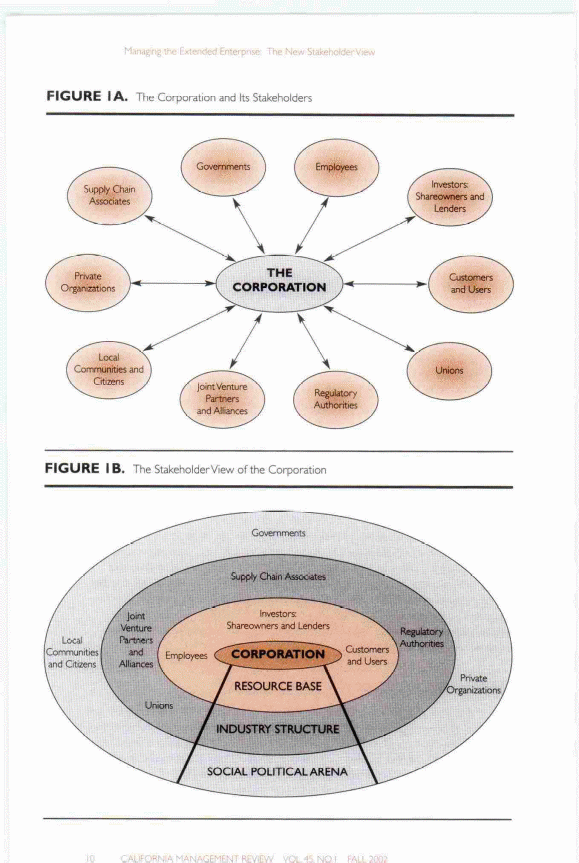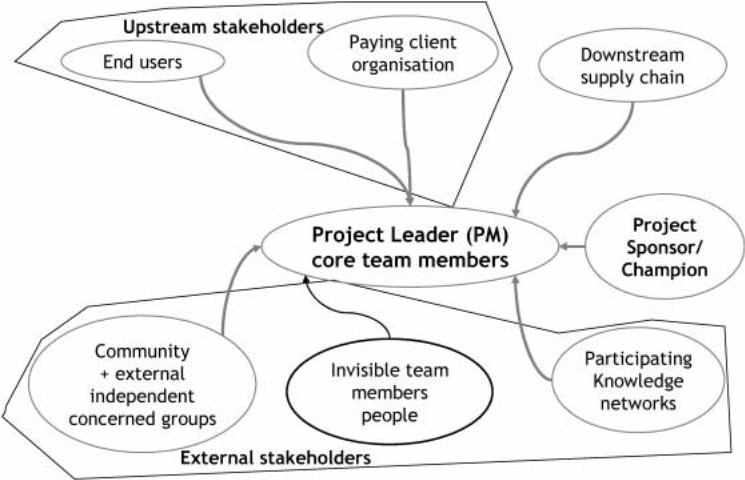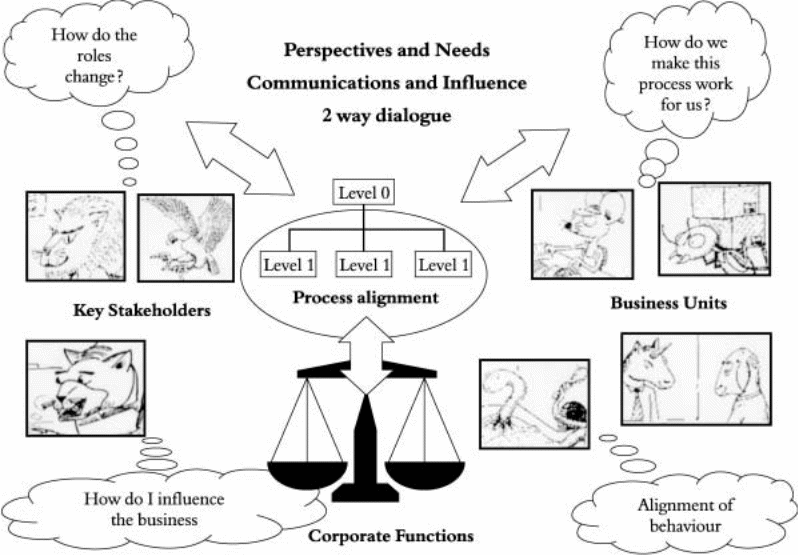Reading 1
Schein, E.H (1996) Three cultures of management: The key to organizational learning. Sloan Management Review/Fall, pp. 9-20.
Overview
- The study’s main aim was to investigate why mis-alignments amongst the engineers, executives and operators hindered learning or innovations in organizations.
- The study went on to disrepute ‘vague’ concepts as change resistance, leadership failure or human nature as being against the adoption and implementation of re-engineering processes or change management frameworks across various organizations.
- Instead, the study proposed the misalignment amongst the three organizational cultures namely the operator culture that existed at the lower level, the engineering culture in the middle level and the executive culture at the topmost level as acting against the re-engineering processes.
Ideas new to me
- The assertion that 3 occupational cultures existed in most organizations and that these cultures operated at cross-roads thus hindering innovation.
- The three organizational cultures (the operator, the engineering and the executive cultures) were new to me.
Reinforced previous assumption
The assumption that organizations need to continue innovating to maintain their competitive advantage
Contradicted previous assumptions
The notion that culture manifested itself in 3 levels namely
- The deep tacit assumptions level;
- Espoused values level; and
- Day-to-day behaviour level
- Contradicted my earlier assumption that culture was manifest in day-to-day behaviours only.
- The assertion that when most organizations attempted to learn in generative ways, the three organizational cultures collided, thus leading to frustration, low productive levels and the failing of innovations or organizational changes. This view contradicted my earlier assumption that employee resistance was the sole cause of change impediment or failure.
Useful Quotes
Usefulness of the thoughts/ideas to my current assignment
Stakeholders
This article does not fully expound on how the three cultures affected achievement of project results. It only concentrated on how they comprised each other thus hindering innovation in organizations. This might be of little significance in this IT case study.
Overall thoughts
- This article might not be very useful for project managers since it fails to establish the link between the established cultures and project implementation. The article requires the user’s to establish a link between these cultures and stakeholder management which can be very confusing.
- However, the identified cultures are important in understanding overall stakeholder behaviours and thus establish strategies to ensure their control.
Reading 2
Osland, J.S. & Bird, A. (2000) Beyond sophisticated stereotyping: Cultural sensemaking in context. Academy of Management Executive, 14(1), pp.65-79.
Overview
- The article identified the origins of cultural paradoxes (contradictions) and introduced value trumping (superiority) idea.
- The study further proposed cultural sense making or the linking of cultural schemas to their contexts.
- The study highlighted that cultural stereotyping is helpful provided that the stereotypes acknowledge its limitations.
- Listed the following as sources of cultural paradoxes
Tendency of relating individual to group values:
- Unresolved cultural issues
- Bipolar patterns
- Role differences
- Espoused versus real values
- Value trumping; recognition that some values precede others.

- This study went ahead to propose changes in the study of cultural approaches by stressing that there was need to embrace both the etic and emic perspectives as opposed to embracing anyone of them as was the case with most current management cultural approaches.
- The emic perspective analysed a certain culture based on its specific boundaries while the etic approach adopted a comparative style of analyzing a certain culture (etic approach compared one culture to one or more different cultures).
Ideas new to me
- That business schools tended to teach cultures in simple-minded terms, while glossing on nuances and at the same time ignoring complexities.
- The six sources of cultural paradoxes
- The five repetitive stages of the cultural sense-making model (as illustrated in figure 2 above).
Reinforced previous assumptions
- That ‘outsiders’ or visitors to foreign places interpreted customs and institutions using their own schemas and lenses
- Inexperience in foreign cultures caused difficulties for new expatriates
Contradicted previous assumptions
- That researchers or scholars on the topic of culture gave biased conclusions of other peoples culture. This contradicted my earlier assumption that scholars on this topic applied objective analysis to the various cultures as manifested in different parts of the world.
Useful Quotes
Usefulness of the thoughts/ideas to my current assignment
Stakeholders’ management
The study though very useful for projects implemented in foreign land, has little significance to the current case study project. This is so because my case study IT project was implemented in the same cultural setting and had no foreign expatriates that would have experienced difficulties in studying the Saudi Arabian culture.
Overall thoughts
- The use of the sense-making model can be very useful to project managers who may be implementing overseas projects. This is so because it can help them to study and have a clear understanding of the cultural setting in which there projects are to be implemented.
- More so, the concepts relating to sources of cultural paradoxes and the sense-making model can be very useful for persons who specialized in teaching culture, for persons working across various cultures and to employees working for multinational corporations.
- Furthermore, by stressing on the need to embrace both emic and epic approaches to cultural management, managements can be able to successfully address the origin of cultural paradoxes. In return, they will educate their foreign expatriates on the challenges that await them in foreign assignments. This will ensure that they are psychologically prepared to successfully implement their assignments.
Reading 3
House, R. et al. (2002) Understanding cultures and implicit leadership theories across the globe: An introduction to project GLOBE. Journal of World Business, 37(1), pp.3-10
Overview
- The article was a research report that involved the study of culture and leadership across 61 nations.
- This study examined the effect of culture on the leadership style
- The report was written to present the analysis and results of a survey that consisted of thousands of middle-level managers in various industries.
- The study established that organization cultures constituted the national culture.
- The study pointed out that there was need for organizational and leadership theories that transcended cultures to enable us understand what really worked or what did not work in different cultural settings.
Ideas new to me
- The assertion that 3 occupational cultures existed in most organizations and that these cultures operated at cross-roads thus hindering innovation.
Reinforced previous assumptions
- That leadership affected organizational culture, form and practices
- The notion that organizational culture affected what leaders did
Contradicted previous assumptions
- The notion that strategic contingencies in organizations affected organizational culture, form, practices and leader behaviour.
Useful Quotes
Usefulness of the thoughts/ideas to my current assignment
Stakeholders and culture management
This article is very useful since it establishes the link between organizational culture and stakeholder management; key aspects which were implemented in the FIS case study.
Overall thoughts
- This article is very relevant to future researchers and project managers since it points out the correlations that exist between project managers/leaders and the organizations that constitute the stakeholder manpower. The understanding of this relationship or linkage is very important for achieving project success.
- This study has emphasized on the need of studying cross-cultural issues. This kind of study can help researcher to uncover new ideas or relationships often not addressed in contemporary theories of leadership. For instance researchers can decided to use a variety of variables to uncover relationships relating to the importance of ethnic background, language, religion, political or historical backgrounds.
Reading 4
Post, J.E., et al. (2002) Managing the extended enterprise: The new stakeholder view. California Management Review, 45(1), pp. 6-28.
Overview
- The article stressed on the need of understanding and managing the expanded enterprises.
- The article identified modern-day expanded industries as consisting of customers, investors, employees, constituencies and communities.
- The article came up with its own ‘stakeholder view’ that stressed on the roles of observing and maintaining stakeholder relationships to create organizational wealth.
- Identified resources, social political-setting and organizational structure as constituting key determinants of successful organizational performance.
Idea new to me
- Some of the skills that were stated for effective stakeholder relationship management were new to me. For instance environmental scanning, measuring and reporting as well as issue scanning
Reinforced previous assumptions
- Some of highlighted skills for effective stakeholder relationship management: listening and then responding and negotiating reinforced my previous assumption.
- The saying that a firm’s long term value was mainly determined by the kind of relationships that existed between it and its stakeholders (The relationship should be sustaining for both parties).
- Figure 1 below reinforced my understanding on the stakeholder groups

Contradicted previous assumptions
None of the raised ideas contradicted my previous assumptions on the topic.
Useful Quotes
Usefulness of the thoughts/ideas to my current assignment
Stakeholders
This article referred to stakeholder management as creation and implementation of policies and or practices that address the goals or concerns of project stakeholders. This definition is very useful to our case study since it is from this perspective that my case study of concern was developed upon.
Overall thoughts
- This study is very useful for the purposes of this case study since it can assist future scholars or project managers to clearly establish their project stakeholders and develop their effective management strategies.
- The identification of relevant stakeholders as consisting of both external and internal groups can assist project managers in defining their project scope.
Reading 5
Frooman, J. (1999) Stakeholder influence strategies. Academy of Management Review, 24(2), pp. 191-205.
Overview
- Used resource dependency theory to determine how firms implemented successful decisions.
- This theory investigated two questions:
- Types of influence strategies availed to stakeholders
- The determinants of stakeholder types
- In referring to Freeman (1984) work, Frooman acknowledged that the purpose of any stakeholder theory rested in enabling managers to clearly identify who the stakeholders were and developing suitable strategies to manage them.
- Stressed that when developing stakeholder management strategies, the following were vital: description of their attributes, definition of their wants/ends and the means by which their ends were going to be achieved.
- Pointed out that the means by which stakeholder ends were to be met had received less attention in most research works.
- The study merged resource dependency theory and stakeholder theory in studying stakeholder influence strategies.
- In reviewing literature on the identity of stakeholders, the author found out that some scholars had categorised them as specific versus generic, secondary versus primary.
- Amongst the stakeholder attributes that were identified included urgency, power and legitimacy. (Economic, formal, political, coercive, normative and utilitarian were identified as various forms of power).
- Stakeholder wants/interests were categorized into schemes such as symbolic versus concrete, social versus economic and international versus national versus local.
- Means of achieving stakeholder ends (in this study) included boycotts, proxy resolutions and modified vendettas.
- This study derived the following as the 4 types of organization-stakeholder relationships from the resource dependency theory:
- Firm power;
- High interdependence;
- Low interdependence; and
- Stakeholder power
Ideas new to me
The 4 types of stakeholder influence strategies:
- Resource control which includes withholding and usage strategies
- Pathways of control which includes direct and indirect strategies
- The four types of stakeholder relationships (as listed above)
Reinforced previous assumptions
- The extension of the definition of stakeholders to any groups having adversarial relationship with the firm
- The proposition that stakeholders with high power will adopt direct withholding strategies to influence the operations of the firm.
Contradicted previous assumptions
- The notion that when there is high interdependency relationship between the firm and the stakeholder, then the stakeholder will adopt direct usage strategy to influence the operations of the firm
Useful Quotes
Usefulness of the thoughts/ideas to my current assignment
Stakeholders
- The categorization of stakeholders into primary and secondary were of great importance to this case study since the stakeholders in this IT project were also classified basing on the same approach.
- The need to consider the stakeholder interests were also vital in the case study project since it was upon this that the project managers determined the classification of the FIS stakeholders.
Overall thoughts
- This article has gone on to describe an empirical study that clearly showed how stakeholders sought to influence firm behaviour.
- In addition, the article has identified types of influence strategies.
- The themes covered in this article are therefore very relevant in achieving any project success.
Reading 6
Walker, D.H.T. et al. (2008) Influence, stakeholder mapping and visualisation. Construction Management and Economics, 26, pp.645-658
Overview
- The authors wrote the paper to offer specific stakeholder visualization tools.
- They considered these tools as useful frameworks upon which project managers could depend on to manage project stakeholders and deliver success.
- In this study, the following key themes were studied
- Stakeholder identification process
- Stakeholder categorization
- Stakeholder visualization
- Stakeholder engagement
- Effective communication monitoring
Ideas new to me
- The categorization of the stakeholders into the 4 groups as depicted in figure 3 below:

- The depiction of project stakeholders as amorphous entities
Reinforced previous assumptions
- The assertion that stakeholders were constituted by individuals or groups requiring any need from the project
Contradicted previous assumptions
- The notion that when performing stakeholder categorization, one needed to consider their power, proximity and urgency. This contradicted my earlier assumption that one just needed to concentrate on their interests/level of project ownership alone.
Useful Quotes
Usefulness of the thoughts/ideas to my current assignment
Stakeholder management
This article is very useful to this case study since it showed how stakeholder behaviour can impact on the success or a failure of a particular project. In this IT case study, the project manager, with the help of the steering committee, had enlisted all the FIS project stakeholders and did regularly update them on the status of the developed system to ensure that they did not exhibit hostile behaviours.
Overall thought
- This article can be very useful for helping project managers to visualize and define stakeholder-related risks thus avoiding or controlling the potential risks attributed to project stakeholders who may exhibit hostile behaviours thus leading to project failure.
- This study has presented an example (see figure 4 below) from a behavioural point of view as opposed to hierarchical. This is likely to help aid managers in understanding the various stakeholder relationships.

A fictional figure 4 depicting the stakeholder relationship and power.
References
Frooman, J. (1999) Stakeholder influence strategies. Academy of Management Review, 24(2), pp. 191-205.
House, R. et al. (2002) Understanding cultures and implicit leadership theories across the globe: An introduction to project GLOBE. Journal of World Business, 37(1), pp.3-10.
Osland, J.S. & Bird, A. (2000) Beyond sophisticated stereotyping: Cultural sensemaking in context. Academy of Management Executive, 14(1), pp.65-79.
Post, J.E., et al. (2002) Managing the extended enterprise: The new stakeholder view. California Management Review, 45(1), pp. 6-28.
Schein, E.H (1996) Three cultures of management: The key to organizational learning. Sloan Management Review/Fall, pp. 9-20.
Walker, D.H.T. et al. (2008) Influence, stakeholder mapping and visualisation. Construction Management and Economics, 26, pp.645-658.
